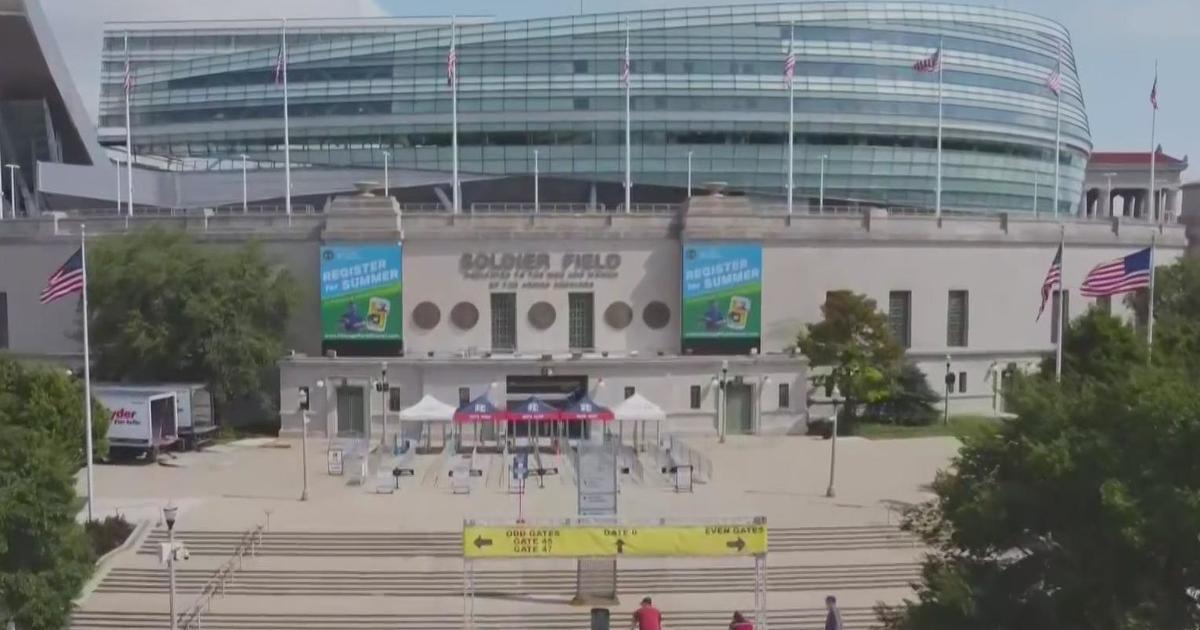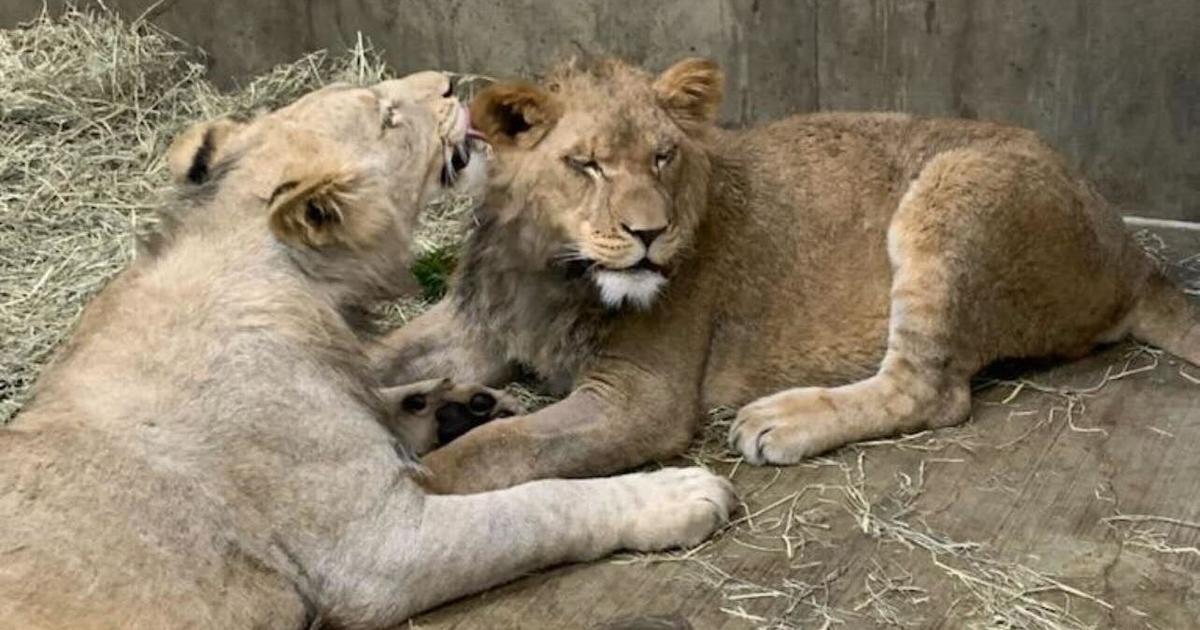Wisch: Reality Of Cubs' 'Plan' Is Taking Too Many Hits
By Dave Wischnowsky-
(CBS) When I was a kid during the 1980s, there were few TV shows I enjoyed more than the "A-Team."
And during each week's episode, there were few moments I enjoyed more than when, after pulling off yet another improbable mission, Hannibal – the A-Team's cocksure leader – would inevitably chomp on a cigar, flash a toothy grin and utter the phrase, "I love it when a plan comes together."
Someday, I'd love to hear Theo Epstein – the Chicago Cubs' Hannibal, if you will – say those same words while he puffs on a celebratory stogie following a World Series championship at Wrigley Field. But if Epstein does pull off his own improbable mission by winning it all with the Cubs, what exactly will "The Plan" have truly entailed?
Because right now, it's being misrepresented.
As the rebuilding process on Chicago's North Side has slowly unfolded since team president Epstein and general manager Jed Hoyer joined the Cubs following the 2011 season, fans have heard reference to "The Plan" time and time again.
It's been used to refer to the franchise's proposed renovations of Wrigley Field. It's been used to refer to the team securing new and more lucrative TV and radio contracts. And it's been used to refer to the club's focus on beefing up its minor league system while letting its big league product languish. All of those things have been billed as parts of "The Plan."
However, it now seems that some are attempting to redefine "The Plan" by claiming its true key element actually involves the Cubs forsaking the pursuit – and even the appetite for – young elite pitching in order to amass only young elite hitters because they're considered to be more reliable and less injury prone.
Earlier this week in a piece boldly (and prematurely) titled, "Hitting Wins Championship: Why The Chicago Cubs' Inverted Rebuilding Strategy Is Starting To Look Brilliant," Grantland.com's Rany Jazayerli wrote that, "One of the things that makes it such a joy to watch the Chicago Cubs' rebuilding plan unfold is that the team's approach is completely transparent. There's no trickery here, no deceit, no super-secret process that's inscrutable to everyone outside of the front office."
Maybe not, but I believe there's a growing misunderstanding about what the Cubs have actually been doing.
That's because in his piece, Jazayerli goes on to argue that "the core principle" with which the Cubs have been trying to build a championship roster since Epstein and Hoyer were hired in 2011 is "building an offense from within and a pitching staff from spare parts."
But has that really been Epstein's and Hoyer's "core principle" since day one? I don't believe so, nor have Epstein and Hoyer ever said as much. In fact, rather than steering clear of young pitching and acquiring only young hitting, "The Plan" has actually always focused on the Cubs drafting or trading for who they consider to be the best available player available. So far, that has been only hitters, but it hardly means that the Cubs wouldn't have acquired an elite young pitcher – if they could have gotten him.
To support his argument for the Cubs' supposed hitting-only approach, Jazayerli points out how the team's last four first-round draft picks – all selected in the top 10 – have been positional players in Javier Baez (No. 9 in 2011), Albert Almora (No. 6 in 2012), Kris Bryant (No. 2 in 2013) and Kyle Schwarber (No. 4 in 2014).
But let's take a deeper look at that. Baez, first off, was actually drafted by former Cubs general manager Jim Hendry, so his selection can hardly be attributed to any "plan" of Epstein's and Hoyer's. But even if it was, when Baez was taken in the draft, five pitchers had already come off the board, including the top four picks.
In 2012, when Almora was taken sixth, the draft's top two pitchers were picked immediately before him. In 2013, Bryant was selected second after the draft's consensus top pitcher Mark Appel went No. 1 overall. And in 2014, the Cubs drafted Schwarber fourth after pitchers went one-two-three.
In no instance did the Cubs pass on the draft's "best pitcher" in favor of a hitter, and we have absolutely no reason to believe that they wouldn't have taken who they considered the best arm if they'd had the chance to actually do so. In fact, just this summer, Cubs vice president of player development and amateur scouting Jason McLeod said that the Cubs had Schwarber No. 2 on their draft board behind eventual No. 1 overall pick Brady Aiken.
That would mean they wanted the hard-throwing Aiken more than hard-hitting Schwarber, but they couldn't get him. In 2013, the Cubs may have felt the same way in the Appel-Bryant debate. We really don't know (and the Cubs are fortunate to have Bryant).
What we do know is that when the top pitchers went off the board in each draft, the Cubs took who they considered to be the best player still available, which happened to be positional players. That's a savvy method, but it doesn't at all mean that the Cubs are averse to young arms, as unpredictable and risky as they might be.
The same tactic used in the draft also applied to the Cubs' recent trade of veteran starters Jeff Samardzija and Jason Hammel to the Oakland A's for two highly touted positional prospects in Addison Russell and Billy McKinney. When asked why he dealt for a shortstop and an outfielder instead of a young arm, Epstein explained, "There was no pitcher available even close to the caliber of player that Addison Russell is."
What if there had been? I suspect that the Cubs, in need of a top pitcher more than they needed another top middle infielder, would have dealt for that pitcher. But without that comparable arm available via trade, they nabbed the best player, who was Russell. Once again, that was savvy. And once again, it doesn't mean that the Cubs don't covet young pitching or are actively avoiding the acquisition of it.
Earlier this month, former Chicago Tribune baseball columnist Phil Rogers, now with MLB.com, wrote that, "Even in this era of offensive drought, the teams that go to the playoffs are the ones that do the best job of pitching and defense, not scoring runs."
Like the other teams who have taken pitchers with the No. 1 overall pick in six of the past nine drafts, the Cubs know this. They also know that they need impact arms, with Hoyer himself recently calling pitching a "huge priority." It of course is and always has been, which is why I've found it silly of late as I've watched an increasing number of writers and fans seemingly attempt to minimize the importance of acquiring young impact arms simply because the Cubs haven't yet acquired those arms.
They likely would have if they could have, but they haven't been able to thus far. And as a result, they've stocked up on young impact hitters instead, which is a path that could ultimately lead to great success.
But if "The Plan" ever does come together for Epstein & Co., it won't be because the franchise has ignored one part of the team in favor of another. It will be because the franchise will have finally acquired some top pitching prospects to complement their positional ones out in the field.
After all, that's how you put together a true A-Team.
Follow Dave on Twitter @wischlist and read more of his columns here.



